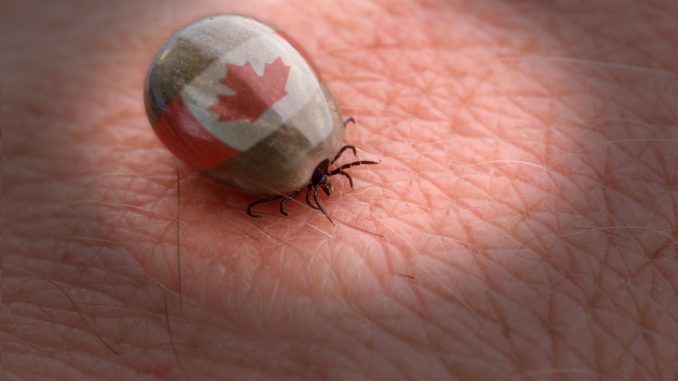
With the arrival of warm weather, Toronto Public Health encourages residents to enjoy the outdoors but also to be aware of where blacklegged ticks can be found and what simple steps can be taken to prevent Lyme disease.
“Although we have seen an increase in tick populations in recent years, the overall risk of acquiring Lyme disease in Toronto is still considered low,” said Dr. Eileen de Villa, Toronto’s Medical Officer of Health. “Spending time outdoors is a great way to be active and stay healthy, but it’s important for everyone to know how to protect themselves against tick bites and to recognize the early signs or symptoms of Lyme disease.”
Symptoms of Lyme disease can include fever, headache, muscle and joint pains, fatigue and a circular rash generally known as a “bull’s eye” rash.
Blacklegged ticks are the only type of tick in Ontario that can transmit the bacteria that cause Lyme disease. They are usually found in bushy or wooded areas with lots of leaves on the ground or where there are tall grasses. The most effective way to prevent Lyme disease is to prevent tick bites.
When enjoying time outdoors, residents can protect themselves using the following tips:
• Use insect repellents containing DEET or icaridin, which are safe and effective for avoiding tick bites. Follow the manufacturer’s instructions for application.
• Wear long pants and long sleeves. Light-coloured clothing may make ticks easier to spot.
• Search your clothes and body when coming in from outdoors. Remember to also check your children and pets for ticks.
• Take a shower to remove ticks before they become attached.
• If you find a tick on your body, it can be removed with fine-tipped tweezers by pulling the tick away from your skin gently but firmly.
Prompt removal of ticks from the skin will help prevent infection, as transmission of the Lyme disease-causing bacteria usually requires the tick to be attached for at least 24 hours. Early symptoms of Lyme disease usually occur within one to two weeks after a tick bite, but can occur as soon as three days or as long as a month after a bite.
If you develop any symptoms of Lyme disease within 30 days of removal of the tick and the tick was attached for 24 hours or more, see your doctor. Be sure to tell the doctor about your recent tick bite, when the bite occurred and where you most likely acquired the tick.
Toronto Public Health has posted signs where blacklegged ticks have been found in the city in areas that include Algonquin Island, Highland Creek, Morningside Park and Rouge National Urban Park. Ticks found in other parts of Toronto can be submitted to Toronto Public Health for identification and testing, which is useful for tracking locations in addition to those already known.
More information about tick bites and Lyme disease is available at https://bit.ly/2JoeuF0.
This news release is also available on the City’s website: https://bit.ly/2IoC1tq
Toronto is Canada’s largest city, the fourth largest in North America, and home to a diverse population of about 2.8 million people. It is a global centre for business, finance, arts and culture and is consistently ranked one of the world’s most livable cities. For information on non-emergency City services and programs, Toronto residents, businesses and visitors can visit http://www.toronto.ca, call 311, 24 hours a day, 7 days a week, or follow us on Twitter at http://www.twitter.com/TorontoComms, on Instagram at http://www.instagram.com/cityofto or on Facebook at http://www.facebook.com/cityofto.

Leave a Reply